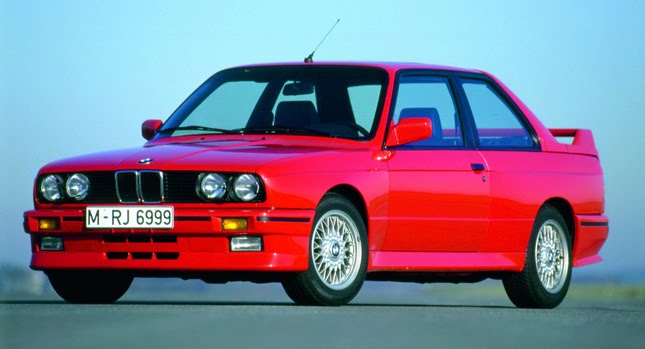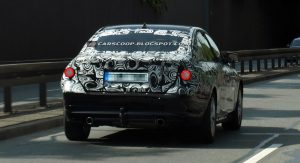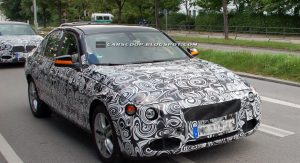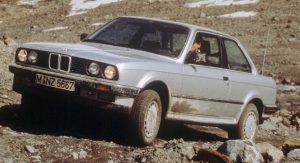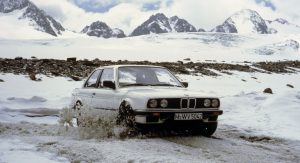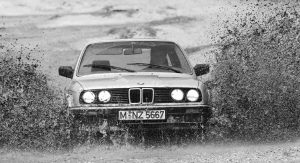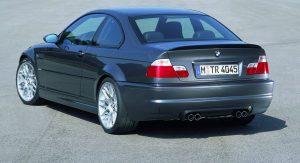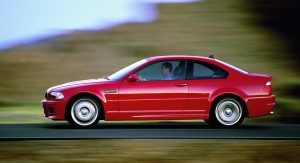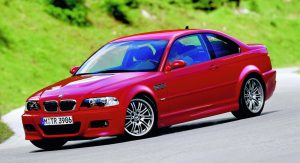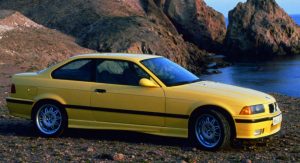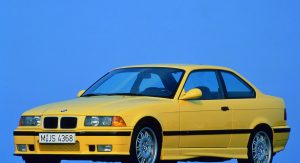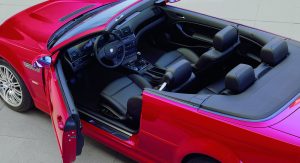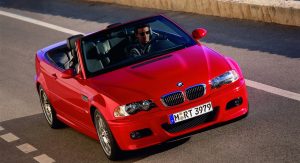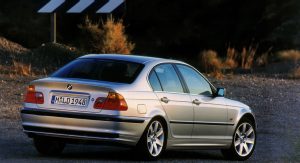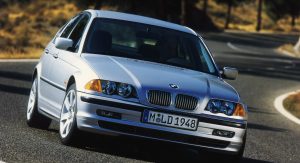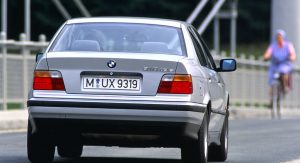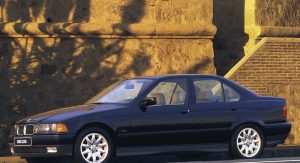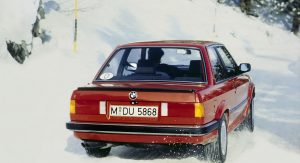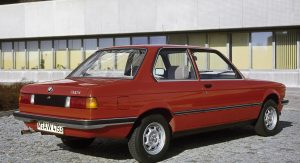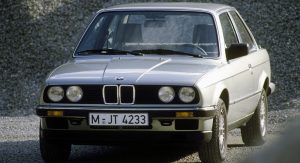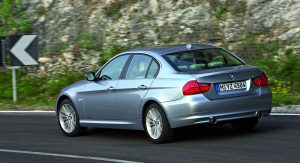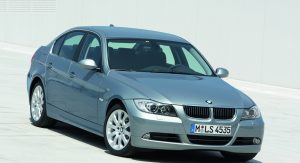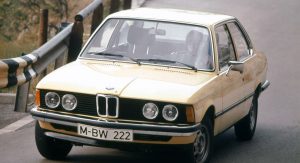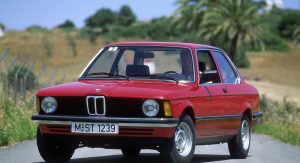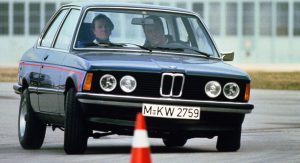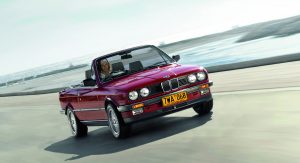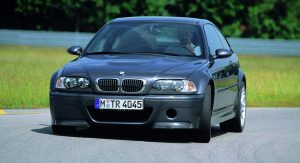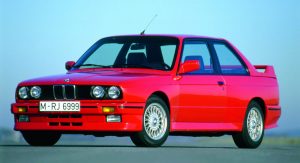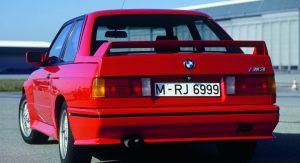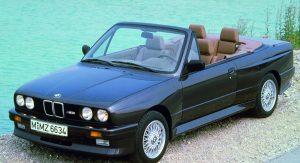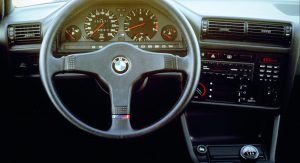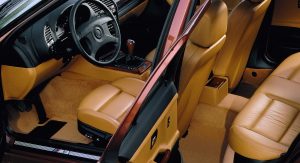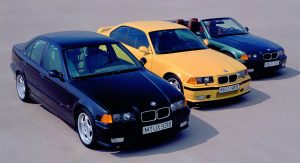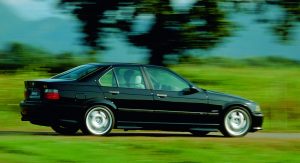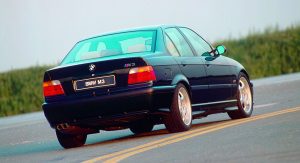In 1975, BMW launched the 3-Series as a successor to the 02 series and essentially established the premium compact car segment. The company went on to produce five generation of the 3-Series selling more than 12 million cars worldwide. Even though it changed considerably from one generation to another, the 3-Series kept its core characteristics: a compact body with a classic design, rear-wheel drive, sporty handling characteristics and potent engines.
Launched initially as a two-door coupe, the 3-Series gained throughout the years new body variants such as the sedan, station wagon, coupe, convertible and even a three-door hatchback model (Compact). Scroll down to read a brief history on each generation.
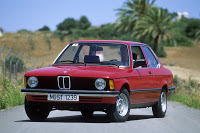 1975: The first generation – E21
1975: The first generation – E21
Available exclusively as a two-door model, the first 3-Series was compact in dimensions measuring 4,355mm in length, 1,610 in width, and 1,380 mm in height. It was the first BMW to feature a center console inclined towards the driver, a detail that would become a typical characteristic for BMWs over the years.
The first 3-Series cane with a McPherson front axle and an independent wheel suspension on trailing arms and spring struts at the rear. It was initially powered by four-cylinder engines with a displacement of 1,573, 1,766 and 1,990 cc. The model designations were 316, 318, 320 and 320i, the latter reserved for a fuel-injected variant of the 2.0-liter unit. Interestingly, the 316 and 318 models were fitted with single headlights, while the 320 and 320i featured double headlights on each side.
In 1977, BMW launched the first six-cylinder engine of the segment on the 323i, which was the most powerful model of the range with 143 horsepower and a top speed of 190 km/h (118 mph). By 1981, the E21 3-Series celebrated its first millionth vehicle.
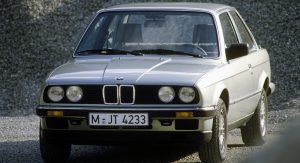 1982: The second generation – E30
1982: The second generation – E30
One of the most popular 3-Series, the E30 featured a new design with optimized aerodynamics, a more spacious interior, more powerful engines and new body types. A year after its launch, the E30 spawned a four-door sedan version, with the convertible and the first M3 to arrive in 1985. A touring version was added to the lineup in 1987.
Other highlights of this generation were the first diesel (324d), the first four-wheel-drive model (325iX), the first engine with four valves per cylinder (318is) and the first 3-Series equipped with a catalytic converter (325e). The E30 sold more than 2.3 million units, exceeding the E21’s sales by a million.
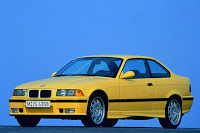 1990: The third generation – E36
1990: The third generation – E36
Launched as a four-door sedan, the E36 marked a bigger leap forward, being significantly larger and more spacious while also introducing the Z-Axle Multilink rear suspension that hugely improved handling. A two-door coupe was unveiled in 1992, with the convertible and the new M3 following shortly after.
For the first time, the M3 was available as a four-door sedan. In 1994, the E-36 inaugurated the 3-Series Compact, a shorter, three-door hatchback version measuring 4,21 meters long. Other important milestones were the introduction of the VANOS variable camshaft control system lowering fuel consumption and emissions while enhancing the torque curve, the turbocharged six-cylinder diesel engine in the 325tds and the first four-cylinder turbo diesel (318tds).
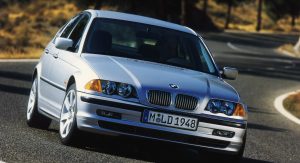 1998: The fourth generation – E46
1998: The fourth generation – E46
The E46 was even larger, more powerful, more comfortable and safer than the E36. It featured BMW’s first direct injection diesel engine (320d), the first petrol engine with two balance shafts (318i) and the introduction of double VANOS on six-cylinder petrol units. Common Rail injection was implemented to the six-cylinder diesel engine as well (330d) and in 2001 BMW introduced the Valvetronic system on its petrol units. This technology increased power output and lowered fuel consumption and emissions.
The E46 also inaugurated a new four-wheel drive system, called xDrive, which operated without conventional locking and featured a fully flexible distribution of power between the front and rear drive wheels. The fourth generation 3-Series also marked the debut of the diesel engine on the coupe and convertible models. The M3 was available only as a coupe and convertible. The E46 Compact model was replaced by the 1-Series in 2004.
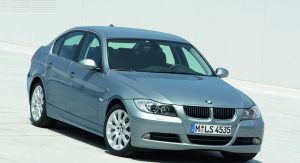 2005: The fifth and current generation – E90
2005: The fifth and current generation – E90
The Bangle-era E90 featured a distinctive design, although not that controversial as its contemporary 7-Series. BMW put a greater emphasis on fuel consumption and emissions by developing the High Precision Injection technology for all its petrol engines and the EfficientDynamics package for the 2.0-liter diesel unit. The BMW 320d EfficientDynamics Edition proves to be the most efficient medium-class car, with an average fuel consumption of 4,1 liters/100 km (57.36 mpg US) and CO2 emissions of just 109 g/km.
The E90 also marked the introduction of the third generation Common Rail direct injection and the brake energy regeneration system. The four-cylinder models with a manual gearbox are fitted as standard with an Auto Start Stop function. After a single generation pause, the M3 is once again offered with a sedan body with power coming from a V8-engine for the first time.
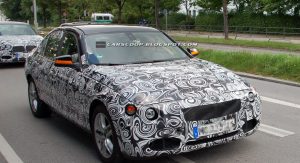 2012: The sixth generation – F30
2012: The sixth generation – F30
Scheduled to be unveiled at the Frankfurt Motor Show this autumn, the new 3-Series will adopt a similar styling to the latest 5- and 7-Series models. It is expected that BMW will introduce a range of turbocharged four-cylinder gasoline units with up to 230HP and turbocharged six-cylinder engines, all equipped with start-stop technology.
The F30 M3 might not have a V8-engine anymore, as BMW is rumored to return to a straight-six unit with twin turbocharging and direct injection. Aside from the sedan, touring, coupe and convertible body styles, the 3-Series is also expected to receive a crossover GT version.
By Dan Mihalascu
PHOTO GALLERY



